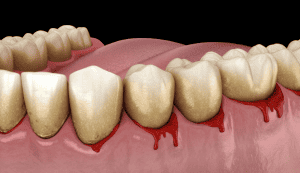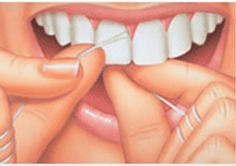Maintaining good oral hygiene is crucial for preventing various dental issues, and flossing is an integral part of this routine. However, despite its importance, many people unknowingly make a particular flossing mistake that could potentially worsen gum disease. In this comprehensive guide, we’ll explore the common flossing error that might exacerbate gum problems, its potential consequences, and, most importantly, how to floss correctly for optimal gum health.
Understanding Gum Disease
Gum disease, also known as periodontal disease, is an inflammatory condition that affects the tissues surrounding and supporting the teeth. It typically starts with the accumulation of plaque—a sticky film of bacteria—on teeth and gums. If not adequately removed through regular oral care practices, plaque can harden into tartar, leading to inflammation and potential damage to the gums.
Gingivitis is the early stage of gum disease, often marked by red, swollen gums that bleed easily. If left untreated, gingivitis can progress to periodontitis, a more severe form of gum disease that can cause pockets to form between the teeth and gums. Over time, periodontitis may lead to tooth loss and other serious dental problems.
The Common Flossing Mistake
The mistake that can exacerbate gum disease is aggressive or forceful flossing. Some individuals may believe that applying more pressure or force while flossing will result in a more thorough cleaning. However, the opposite is true.
Consequences of Aggressive Flossing:
Aggressive flossing may cause the gums to bleed. While some people believe that bleeding is normal during flossing, it is, in fact, a sign of inflammation and irritation.
Forceful flossing can lead to damage to the delicate gum tissue. This can cause the gums to recede, exposing the tooth roots and making them more susceptible to sensitivity and decay.
Receding gums, a common result of aggressive flossing, can expose the tooth’s root. This not only affects the aesthetics of the smile but also leaves the tooth vulnerable to decay and sensitivity.
Periodontal pockets, spaces that form between the teeth and gums in advanced gum disease, can deepen with aggressive flossing, allowing for the accumulation of more bacteria and exacerbating the disease.
Correct Flossing Techniques for Healthy Gums:
Gentle Pressure
Flossing should be done with gentle, controlled pressure. There is no need to force the floss aggressively between teeth.
Proper Technique
Use a gentle back-and-forth and up-and-down motion to guide the floss between each tooth. Curve the floss around the base of each tooth in a ‘C’ shape to clean below the gumline.
Individualized Approach
Different spaces between teeth may require different flossing techniques. Be attentive to your unique dental anatomy and adjust your flossing technique accordingly.
Regular Flossing
Consistency is key. Floss at least once a day to maintain optimal oral health and prevent the buildup of plaque and tartar.
Soft Floss
Use dental floss that is soft and flexible. There are various types of floss available, including waxed, unwaxed, and those designed for sensitive gums. Choose the one that suits your preferences and needs.
In the quest for healthy gums, it’s essential to recognize that more force doesn’t equate to better results when it comes to flossing. Instead, a gentle and consistent approach, combined with regular dental check-ups, is the key to maintaining optimal gum health. By avoiding the common mistake of aggressive flossing, individuals can contribute to the prevention and management of gum disease, ensuring a lifetime of strong and healthy teeth. Remember, when it comes to flossing, it’s not about strength but precision and consistency.


